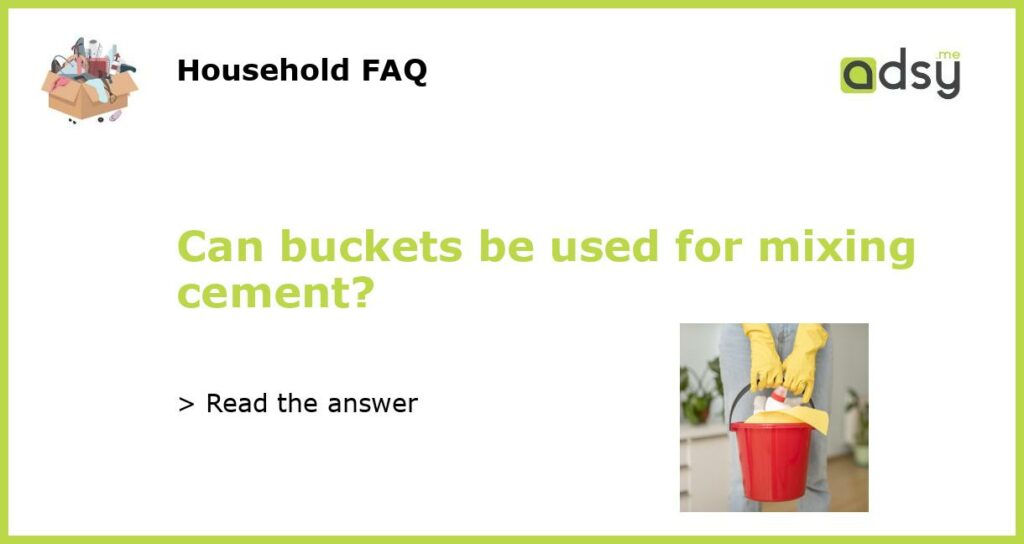Yes, buckets can be used for mixing cement
When it comes to construction and DIY projects, using buckets for mixing cement is a common practice. Buckets are versatile and easily accessible, making them a convenient tool for mixing cement. Whether you’re a professional or a novice, buckets can be effectively used to mix cement for various applications. In this article, we will explore the benefits of using buckets for mixing cement, the steps involved in the process, and some tips to ensure a successful cement mixing experience.
Benefits of using buckets for mixing cement
There are several benefits to using buckets for mixing cement:
- Convenience: Buckets are readily available and can be easily found at any hardware store. They come in various sizes, allowing you to choose the one that best suits your needs.
- Portability: Buckets are lightweight and easy to carry, making them portable and convenient for mixing cement on-site or in different areas of your project.
- Control: Buckets provide you with better control over the mixing process. You can mix the cement thoroughly without splashing or spilling, ensuring consistent quality and strength.
- Cost-effectiveness: Buckets are an affordable alternative to purchasing specialized cement mixers. If you’re working on a small-scale project, using buckets can save you money.
Steps to mix cement using buckets
Here are the steps involved in mixing cement using buckets:
- Gather your materials: Before you start mixing, gather all the necessary materials, including cement, sand, water, and a bucket.
- Measure the ingredients: Follow the specifications provided by the cement manufacturer to determine the correct ratio of cement to sand.
- Add the cement and sand: Pour the appropriate amount of cement and sand into the bucket. A general rule of thumb is to use one part cement and three parts sand. Ensure they are evenly distributed in the bucket.
- Mix the cement: Slowly add water to the bucket while continuously stirring the mixture. Use a trowel or a mixing tool to thoroughly blend the cement and water until you achieve a consistent and workable paste-like consistency.
- Check the consistency: Once the cement is mixed, check the consistency by testing it with your trowel. It should be workable and hold its shape without being too watery or dry. Adjust the water or cement ratio if needed.
Tips for mixing cement using buckets
Here are some tips to ensure a successful cement mixing experience using buckets:
- Use the right type of bucket: Opt for a sturdy plastic or metal bucket that can withstand the weight and pressure of mixing cement. Avoid using buckets made of brittle materials that may crack or break.
- Prepare the workspace: Prior to mixing, ensure you have a clean and well-ventilated workspace. Lay down a tarp or plastic sheet to catch any spills or splashes.
- Mix in batches: If you’re working on a large project, it’s advisable to mix the cement in smaller batches to maintain the quality and consistency.
- Maintain safety precautions: Wear protective gloves and eyewear when mixing cement to avoid any contact with your skin or eyes. Cement can cause irritation or burns if not handled properly.
- Follow the manufacturer’s instructions: Always refer to the cement manufacturer’s instructions for specific mixing guidelines. They may recommend different ratios or techniques based on the type of cement you’re using.
Using buckets for mixing cement is an effective and convenient method for construction and DIY projects. Buckets offer various benefits, including convenience, portability, control, and cost-effectiveness. By following the steps and tips outlined in this article, you can successfully mix cement using buckets and achieve the desired consistency for your project. Remember to always prioritize safety and consult the manufacturer’s instructions for specific mixing guidelines.






